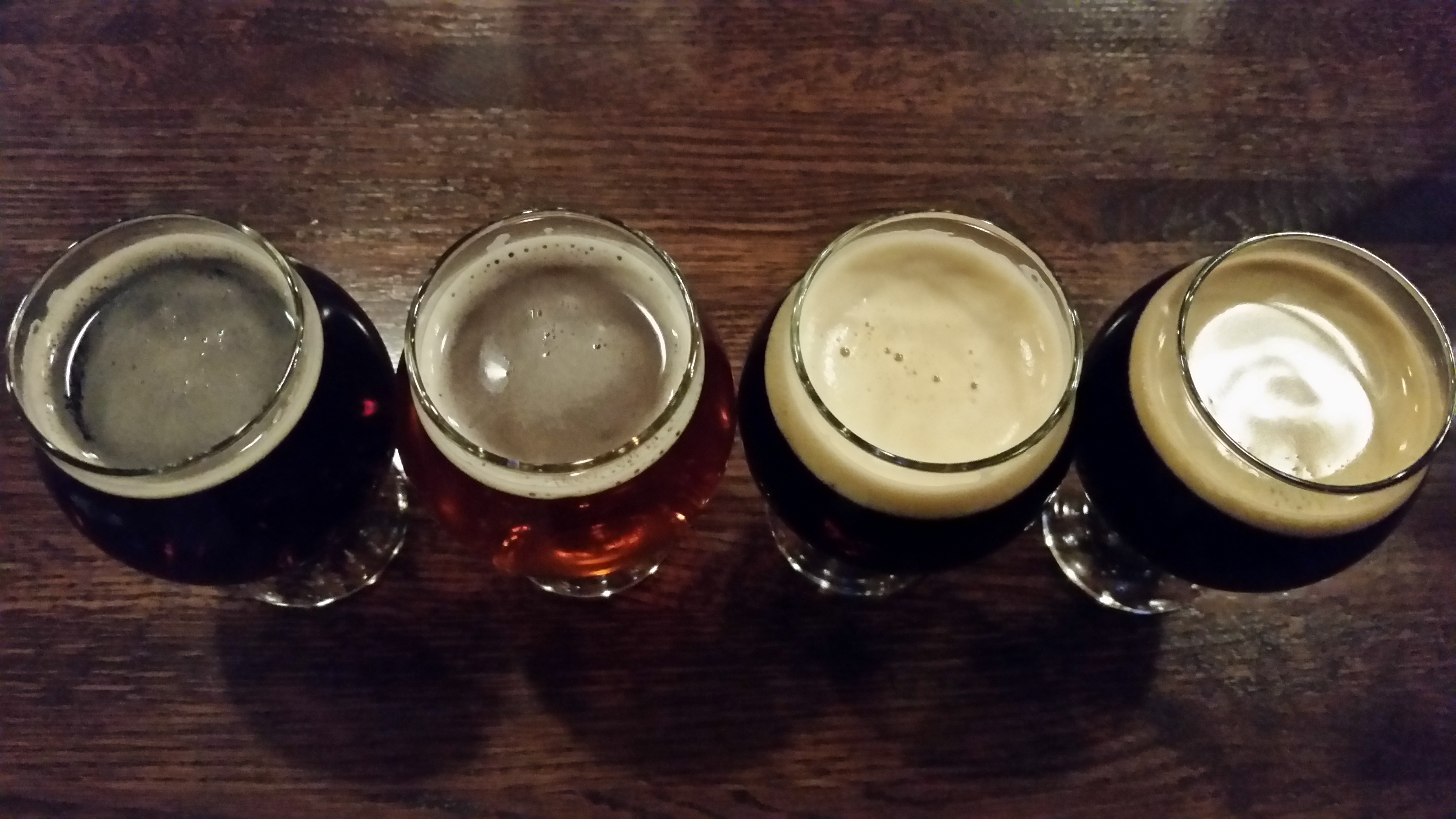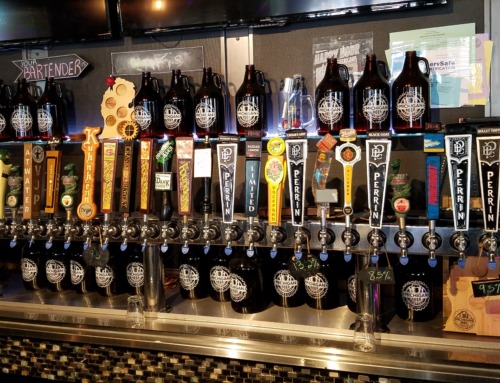As you try to discover what types of beer you really like, having the right vocabulary can be helpful. Here are some of the most commonly-used terms in the industry.
Alcohol By Volume (ABV) – The measure of the amount of space the alcohol in a beer takes up as a percentage of total volume. This is the worldwide standard for measuring the alcohol content in beer.
Ale – Beers fermented with top fermenting yeast. Ales typically are fermented at warmer temperatures than lagers, and are often served warmer. The term ale is sometimes incorrectly associated with alcoholic strength.
Barley – The primary malt grain used in the brewing process. It is also used in the production of many spirits.
Barrel – A wooden vessel that is used to age/condition/ferment beer. Some brewer’s barrels are brand new and others have been used previously to store wine or spirits, which can enhance the flavor profile.
Body – Refers to the feel of thickness of a beer in your mouth. Can be described as full, medium, or thin-bodied.
Boiling – A critical step during the brewing process during which unfermented beer is boiled inside the brew kettle. During this process, one or more hop additions can occur to achieve bittering, hop flavor and hop aroma in the finished beer. Boiling also sterilizes a beer.
Brew – To make beer. Beer brewing is a process that encompasses the following steps: mashing, lautering, boiling, and fermentation.
Brewpub – A brewery that sells 25% or more of its beer on site, and often also includes food. Their beer is brewed primarily for sale in the restaurant/bar, though it is sometimes for sale in containers to be taken off-site.
Cellaring – Storing or aging beer at a controlled temperature to allow maturing.
Color – The hue or shade of a beer, primarily derived from grains, sometimes derived from fruit or other ingredients in beer. Beer styles made with caramelized, toasted or roasted malts or grains will exhibit increasingly darker colors. The color of a beer may often, but not always, allow the consumer to anticipate how a beer might taste. It’s important to note that beer color does not equate to alcohol level, mouthfeel or calories in beer.
Craft Beer – In the U.S. this is typically defined as beer produced by a brewery that is designated as small, producing no more than 6 million barrels of beer annually; independent, with less than 25 percent of the craft brewery owned or controlled by a beverage alcohol industry member that is not itself a craft brewer; and traditional, meaning a majority of its total beverage alcohol volume in beers are those whose flavor derives from traditional or innovative brewing ingredients and their fermentation.
Dry Hopping – The addition of dry hops late in the brewing process to add a hoppy character to the beer without affecting the beer’s bitterness.
Esters – Volatile flavor compounds that form through the interaction of organic acids with alcohols during fermentation and contribute to the fruity aroma and flavor of beer. Esters are very common in ales.
Fermentation – The chemical conversion of fermentable sugars into approximately equal parts of ethyl alcohol and carbon dioxide gas, through the action of yeast. The two basic methods of fermentation in brewing are top fermentation, which produces ales, and bottom fermentation, which produces lagers.
Filtering – In this process the beer is passed through a very fine filter that removes any particulates and most of the yeast. Beer must be filtered cold.
Fresh Hopping – The addition of freshly harvested hops that have not yet been dried to different stages of the brewing process. Fresh hopping adds unique flavors and aromas to beer that are not normally found when using hops that have been dried and processed per usual. Synonymous with wet hopping.
Grist – Ground malt and grains ready for mashing.
Growler – A jug- or pail-like container once used to carry draught beer bought by the measure at the local tavern, brewery or market. Growlers are usually ½ gal (64 oz) in volume and made of glass. Brewpubs, and now even some markets in Michigan serve growlers to sell beer to go. Often a customer will pay a deposit on the growler but can bring it back again and again to be refilled.
Head – Foam on the top of the beer when poured into a glass. Some are light foam, some are thick.
Homebrewing – The art of making beer at home. In the U.S. a single person can legally brew up to 100 gallons of beer annually for personal enjoyment and up to 200 gallons in a household of two persons or more of legal drinking age.
Hops – A cone-like flower grown on a bine, responsible for the bitterness in beer, also adding balance by counteracting the sweetness of malts. Widely used for approximately 500 years, hops can act as a preservative in beer and contribute certain proteins to the mixture that aid in head retention. There are currently more than a hundred varieties of hops grown around the world, including some here in Michigan.
Indian Pale Ale (IPA) – A hoppy beer style within the broader category of pale ale. A double or triple IPA means a higher bitterness level, and typically more alcohol.
International Bittering Unit (IBU) – The scale which measures the amount of bittering substances in beer, often characterized by the amount of hops. The higher the number, the higher the bitterness.
Keg – A cylindrical container, usually constructed of steel or sometimes aluminum, commonly used to store, transport and serve beer under pressure. In the U.S., kegs are referred to by the portion of a barrel they represent, for example, a ½ barrel keg = 15.5 gal, a ¼ barrel keg = 7.75 gal, a 1/6 barrel keg = 5.23 gal.
Lager – Lagers are any beer that is fermented with bottom-fermenting yeast at colder temperatures. They are most often associated with crisp, clean flavors and are traditionally fermented and served at colder temperatures than ales.
Lautering – A process in brewing beer in which the mash is separated into the clear liquid wort and the residual grain, usually consists of three steps: mashout, recirculation, and sparging.
Malt – One of the main ingredients of beer, malt is barley which has been steeped in water, allowed to germinate, and then heat dried which stops germination. The type of barley, the level of germination allowed and the temperature of drying all influence the resulting flavor of the malts. Other cereal grains can also be malted, such as wheat or rye.
Mashing – The process of mixing crushed malt, and possibly other ingredients, with hot water to convert grain starches to fermentable sugars and non-fermentable carbohydrates that will add body, head retention, and other characteristics to the beer. Mashing also extracts colors and flavors that will carry through to the finished beer. Mashing requires several hours and produces a sugar-rich liquid called wort.
Microbrewery – A brewery that produces less than 15,000 barrels of beer per year with 75% or more of its beer sold off-site.
Mouthfeel – The textures one perceives in a beer. Includes carbonation, fullness and aftertaste.
Nitrogen – When used for the carbonation of beer, Nitrogen contributes a thick creamy mouth feel opposed to c02.
Pasteurization – Quick Heating of beer to 60-79°C/140-174°F to stabilize/sterilize it microbiologically.
Session Beer – A category of beers that are marketed for their notably lower alcohol level typically, less than 5% ABV.
Wet Hopping – The addition of hops that are used fresh off the bine, without being processed. This is only possible during the fall, immediately following the harvest. It adds unique flavors and aromas to beer that are not normally found when using hops that have been dried and processed per usual.
Wort – The sweet liquid resulting from the mashing and lautering process while brewing. Basically, it is “beer” prior to fermentation.
Yeast – Unicellular celled organisms of the fungus family that are responsible for converting the sugars contained in wort into alcohol and carbon dioxide. Yeast comes in two major classifications for the making of beer: ale yeast and lager yeast.



Leave A Comment
You must be logged in to post a comment.